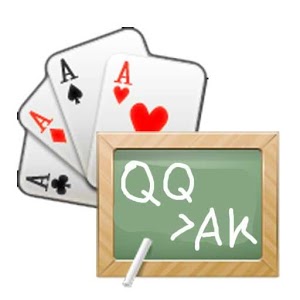Wrap, bare nut straight heads up
It’s a 50¢-$1 pot-limit Omaha (PLO) game on the electronic poker tables at Excalibur in Las Vegas, and you are playing heads up. Your opponent is a competent player who doesn’t make a lot of big mistakes, but he is also an extremely passive player who rarely bluffs. He will frequently defend his big blind to a raise. He has a $163 stack, and you have him covered.

1. You are dealt the Q 8
8












a. Fold
b. Call
c. Raise
2. You raise to $3, and your opponent calls. The flop comes 9













a. Check
b. Bet
3. You bet $6, and your opponent calls. The turn is the 5




a. Check
b. Bet
4. You bet $18. Your opponent now raises to $72, and has another $82 behind. You should:
a. Fold
b. Call
c. Raise all in
5. You call. The river is the J




a. Bet $25
b. Bet $82 and set your opponent all in
Grades and Analysis
1. a(0), b(6), c(10)
With three medium straight cards and an overcard kicker in position, folding is not a reasonable option, especially heads up – and especially on the button. You have more than enough hand for a raise, especially against an opponent who is not particularly tricky and is fairly easy to control when you have the button.
2. a(2), b(10)
As a general rule of thumb, when you raise preflop and have the initiative and are heads up after the flop, you should bet a 13-card wrap and bigger – hands that can stand a check-raise – but take the free card if you have an open-end straight draw or smaller. And the less tricky the opposition – the less likely he is to check-raise – the wider your betting range should be.
3. a(0), b(10)
I don’t like checking here. You should bet the straight.
4. a(0), b(10), c(5)
This is a tricky spot. You have the bare nut straight but no redraw. Your opponent probably isn’t bluffing, in which case he probably has the same straight. And if he has the same straight, you are probably getting a freeroll. With another $82 behind in addition to your opponent’s $72 bet, the play is to call and represent a draw; if the board changes (that is, the board pairs, a flush card hits, or another straight card comes to put out a possible bigger straight) and your opponent checks, you can bet and try to steal the pot.
5. a(0), b(10)
By just smooth-calling the turn, you’ve represented a draw, and it will be difficult for your opponent to put you on the straight. If your opponent calls anything at all, he will probably pay off with the remainder of his stack. A small bet would be giving up value here.
In the actual hand, I bet all in, and my opponent called with the A
















Submit your review | |






